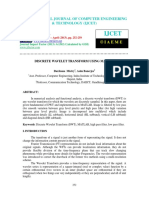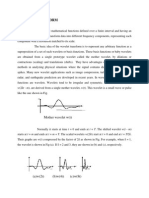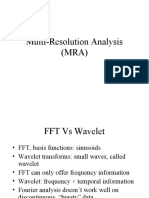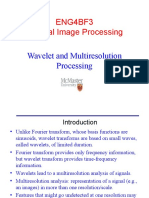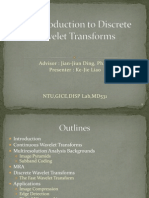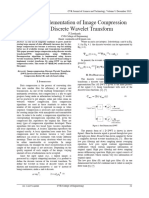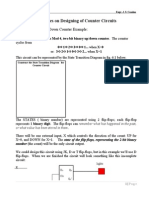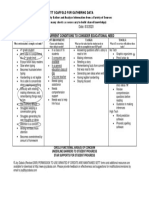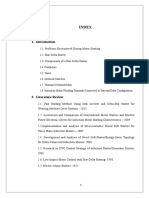0% found this document useful (0 votes)
92 views18 pagesWave Let
Wavelet transform provides a multiresolution approach to image coding. It decomposes an image into different frequency subbands using wavelet filters. The encoding process involves applying wavelet transform, quantization and symbol encoding to the input image. The decoding process reconstructs the decompressed image using inverse wavelet transform and symbol decoding. Unlike DFT and DCT, wavelet transform analyzes images at different resolutions using wavelet filters like Haar and Daubechies. It breaks down an image into lower resolution sub-images like diagonal, horizontal, vertical and approximation images.
Uploaded by
majid jalilCopyright
© © All Rights Reserved
We take content rights seriously. If you suspect this is your content, claim it here.
Available Formats
Download as PPT, PDF, TXT or read online on Scribd
0% found this document useful (0 votes)
92 views18 pagesWave Let
Wavelet transform provides a multiresolution approach to image coding. It decomposes an image into different frequency subbands using wavelet filters. The encoding process involves applying wavelet transform, quantization and symbol encoding to the input image. The decoding process reconstructs the decompressed image using inverse wavelet transform and symbol decoding. Unlike DFT and DCT, wavelet transform analyzes images at different resolutions using wavelet filters like Haar and Daubechies. It breaks down an image into lower resolution sub-images like diagonal, horizontal, vertical and approximation images.
Uploaded by
majid jalilCopyright
© © All Rights Reserved
We take content rights seriously. If you suspect this is your content, claim it here.
Available Formats
Download as PPT, PDF, TXT or read online on Scribd
/ 18




